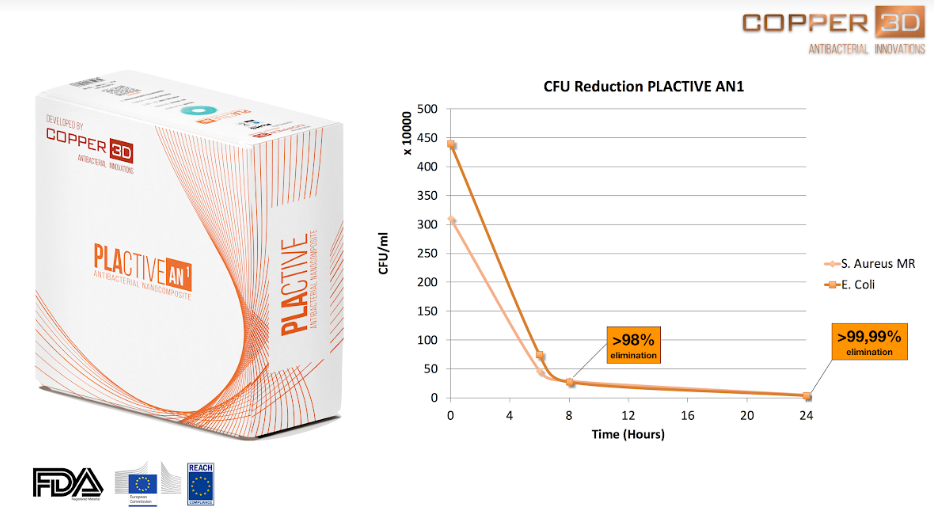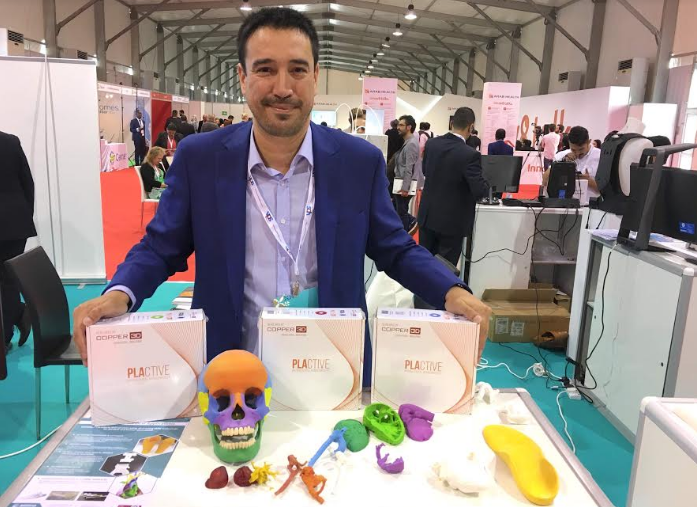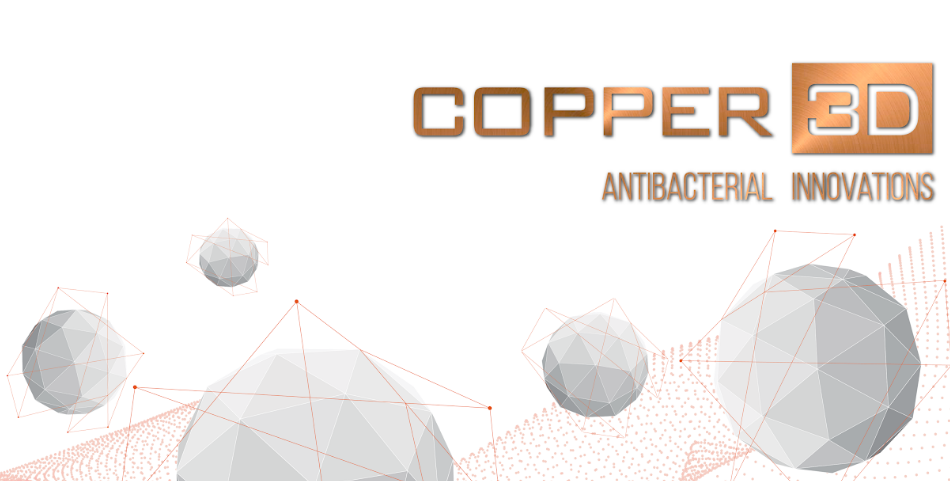NASA Nebraska Space Grant Means Further Collaboration with Copper3D to Study Microbial Risk in Space
Chilean startup Copper3D and 3D printing endeavors at the International Space Station are both interests we have followed actively—but never together up until last year when NASA expressed interest in their antibacterial 3D printing filament, PLACTIVE. A collaboration between the two entities makes a lot of sense when you consider the obvious need for avoiding unwanted bacteria (and resulting infections) in space, and especially for astronauts to avoid immune system dysregulation.
3D printing at the International Space Station has been highly publicized, not only because it is an exciting use of new technology, but also because the ability to produce parts on demand, like a simple wrench, means incredible potential for the future in terms of maintenance during space travel or at the ISS, and even perhaps during the construction of colonization on Mars. The idea of bioprinting in space has of course taken such fabrication one step further as well. Both bioprinting and 3D printing of polymers in space seem to be part of the extensive sets of technologies that are needed to colonize space. We don’t know how astronauts will get hurt or what on the craft will break nor do we know the unforeseen circumstances that space crews will find themselves in. Increasingly 3D printing is being seen as the technology to ensure against any eventualities.
No matter what type of 3D printing is happening though, it has come to the attention of NASA that astronauts may need to avoid dangerous microbes while creating parts—innovative as they may be. In some cases, microbes may even be altered from their typical state when grown during flight. This could pose dangers to human immune systems, as well as causing a higher risk of infectious disease during spaceflight.
Dr. Claudio Soto, Medical Director of Copper3D, expounded on the dangers of and details surrounding immune system dysregulation:
“It is an entity that is recently being studied and that could put long-term space missions at risk, for example those that are expected to be made in the future on Mars. What is known so far is that there could be a sum of factors behind this problem such as radiation, multi-resistant microbes, stress, microgravity, altered sleep cycles and isolation. To these factors we can add others, for example studies have demonstrated that the methicillin resistant Staphylococcus aureus strain shows enhanced antibiotic resistance in microgravity-analogue conditions suggesting potential alterations in antibiotic efficacy during spaceflights. Thus, there is a critical need for preventive countermeasures to mitigate microbial risks during space flight missions.”
Copper3D’s specialty in antimicrobial 3D printing, accompanied by NASA’s growing interest in the matter, could be vital to the future health of everyone traveling—or eventually living—in space.
“Basically, our idea is to introduce to the 3D printing industry the concept of Active Materials, that is, materials that are no longer inert and only support structures but now they are active components that play a specific role and adds great value to the final 3D printed object, in this case the attribute is that these objects are completely antimicrobial,” said Daniel Martinez, Director of Innovation and CMO of Copper3D. “This new technology, based on a patented additive with copper nanostructures and other carriers/controller elements, can have a very positive impact on the new challenges faced by NASA facing the long-term space missions and this specific problem with the Immune System Dysregulation.
“Imagine the impact that this new generation of 3D printed objects can have on the early treatment of complex wounds, on avoiding infections of all kinds or in a whole new generation of active/antimicrobial medical devices.”
Funding from the NASA Nebraska Space Grant office will allow researchers to further examine features of 3D printed medical devices for astronauts.
“The objective is to test the antimicrobial properties of this material in the ISS,” states Dr. Jorge Zuniga, researcher from the Department of Biomechanics of the University of Nebraska at Omaha.
Everyone involved in examining the use of materials in space has been on an expansive journey, full of learning, along with discovering new ways to use technology and accompanying features.
“This new research collaboration with NASA will help us to validate this concept in very extreme conditions, which also leads us to think that this new type of materials can also be very useful to solve the great challenges and problems that we face here on earth … this is just the beginning and we know that it will be a huge revolution in the way we understand manufacturing and the nature of materials,” concluded Andrés Acuña, CEO of Copper3D.
Find out more about the grant and individuals involved in the project here.
What do you think of this news? Let us know your thoughts! Join the discussion of this and other 3D printing topics at 3DPrintBoard.com.
[Press Release & Images shared with 3DPrint.com by Copper3D]
Subscribe to Our Email Newsletter
Stay up-to-date on all the latest news from the 3D printing industry and receive information and offers from third party vendors.
Print Services
Upload your 3D Models and get them printed quickly and efficiently.
You May Also Like
Printing Money Episode 30: Q1 2025 Public 3D Printing Earnings Review with Troy Jensen, Cantor Fitzgerald
Printing Money is back with Episode 30, and it’s that quarterly time, so we are happy and thankful to welcome back Troy Jensen (Managing Director, Cantor Fitzgerald) to review the...
3DPOD 260: John Hart on VulcanForms, MIT, Desktop Metal and More
John Hart is a Professor at MIT; he´s also the director of the Laboratory for Manufacturing and Productivity as well as the director of the Center for Advanced Production Technologies....
Etsy Design Rule Change Reduces Selection of 3D Printed Goods
Online marketplace Etsy has implemented a rule change requiring all 3D printed goods on the site to be original designs. The update to the site’s Creativity Standards states, ¨Items produced using...
3DPOD 259: AM at Stratasys with Rich Garrity, Chief Business Unit Officer
Rich Garrity is the Chief Business Officer of Stratasys. Rich shares Stratasys´ vision and future with us. We talk about machines, applications, clients, and the market in general. What technologies...






































